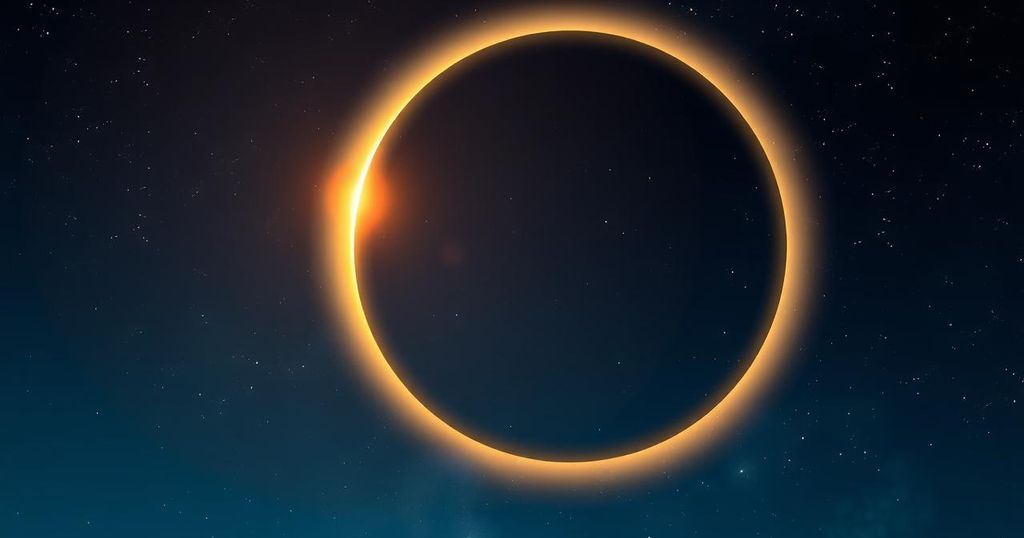Surya Grahan 2025: A Global Partial Solar Eclipse Event

The Surya Grahan on March 29, 2025, will partially obscure the Sun as seen from various parts of the world, excluding India. Observers are advised to use protective eyewear while watching the eclipse, which will last approximately four hours and feature a rare double sunrise phenomenon in some regions.
The Surya Grahan, or solar eclipse, will occur on March 29, 2025. This significant astronomical event will allow the Moon to partially obstruct the Sun, albeit without perfect alignment. As a result, regions in the USA, Canada, South America, Iceland, Greenland, Europe, and Northern Asia will witness the phenomenon. Unfortunately, it will not be visible from India.
The eclipse will unfold at varied times around the world, with some locations experiencing the event at sunrise while others will view it in the afternoon. Notably, in certain areas, this phenomenon will create an optical illusion known as double sunrise, where the Sun appears to rise twice due to the Moon’s shadow.
Regions in the UK will experience different levels of eclipse coverage, with northwest Scotland witnessing up to 47.9% blockage, while areas such as Dover may see only 28.1% coverage. This discrepancy underlines the importance of local geography in observing celestial events.
Safety is paramount when viewing a solar eclipse. Individuals are advised to check eclipse glasses for any damage. Children must be supervised to ensure they use the glasses properly, and these glasses should never be used with telescopes or cameras which can damage the eyes.
To safely observe the eclipse, viewers should utilize certified eclipse glasses, or solar viewers. Ordinary sunglasses are insufficient, as safe solar viewers are significantly darker and comply with the ISO 12312-2 standard. For those lacking these tools, the pinhole projector provides a safe alternative by projecting an image of the Sun on a surface.
Google is enhancing the experience by offering an interactive animation when users search for ‘solar eclipse’ or ‘surya grahan’, visually depicting the shadow of the Moon obstructing the Sun.
Directly viewing the Sun, even during an eclipse, is highly discouraged due to the risk of serious eye damage. NASA emphasizes the necessity of protective eyewear during such events.
The timing of the eclipse will vary globally. While certain regions in the northeastern US will experience it at dawn, western Europe will witness it late morning. Conversely, areas in eastern Europe and northern Asia will observe the eclipse during the afternoon.
The partial solar eclipse will not be visible in India despite being observable from various other continents, including large sections of North and South America, Europe, and parts of Greenland and Iceland.
The unique double sunrise effect will be particularly evident in the USA and Canada, where the moon’s silhouette might create the visual of two distinct sunrises.
In Indian Standard Time, the eclipse is scheduled to commence at 2:20 PM, reach its peak at 4:17 PM, and conclude by 6:13 PM, lasting for four hours.
The upcoming Surya Grahan on March 29, 2025, presents a momentous opportunity for astronomy enthusiasts globally, though it will not be visible in India. Observers worldwide must take precautions to safely experience the eclipse, utilizing appropriate viewers and remaining aware of timing differences across regions. The unique double sunrise phenomenon adds an intriguing aspect to this celestial event, making it truly remarkable.
Original Source: www.hindustantimes.com






